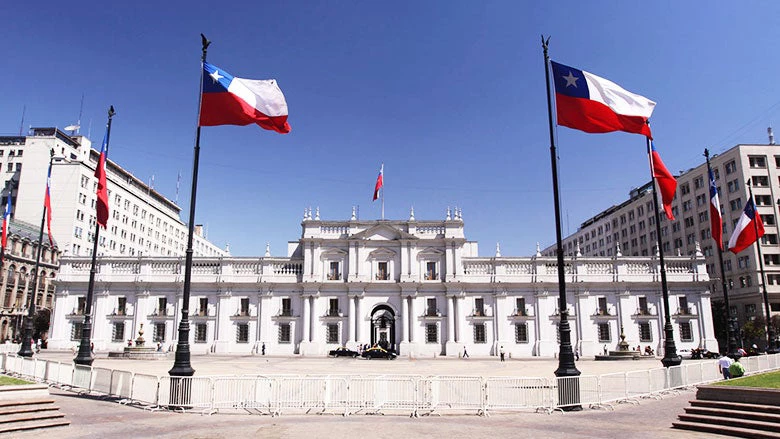 Palacio de la Moneda en Santiago, Chile.
Palacio de la Moneda en Santiago, Chile.
Last May, a Chilean news outlet called The Clinic presented the stories of four lower middle-income families during the COVID-19 outbreak. When quarantine measures restricted their ability to work, they quickly found it hard to afford to cover even their basic needs.
A couple with a teenage son portrayed how they broke the quarantine rules to go out and work, just to stay afloat. A household of seven described the experience of living in a 70 square meter apartment during the quarantine. Seeing their income from work reduced, the US$150 pension per month of one of the grandparents became one of their primary sources of income.
What these families have endured is emblematic for the experience of lower middle-income households in Chile. World Bank estimates find that the COVID-19 crisis could reverse years of growth in Chile’s middle-class.
Caught between a rock and a hard place
Benefitting from robust economic growth, Chile’s middle-class had grown from about 36 % to nearly two thirds of the population in the decade after 2009. These new middle-class Chileans now find themselves caught between a rock and a hard place.
Many of them cannot work from home given the nature of their jobs. A large share lost their work due to quarantine measures and business closures. Recent surveys have found that the employment impacts have been particularly severe among women, informal and low-skilled workers.
Others continued to work but at the risk of contracting COVID-19. A recent study showed that mobility was reduced by 60-80 % in high income areas of Santiago, while it was reduced by only 20-40 % in low income areas. As a result, the infection rate is higher in low- and middle-income areas.
World Bank research shortly before the COVID-19 crisis focused on the factors that could push new middle-class households back into poverty. Two factors stood out: catastrophic health expenditures and long unemployment spells – precisely those factors affected by COVID-19. Accordingly, new World Bank simulations displayed in Figure 1, indicate that the share of the population with stable middle-class incomes may decrease from about 63 % to 54 %.
Social spending programs may have helped to curb some of the very worst effects of the economic crisis. Examples include the Ingreso Familiar de Emergencia and the Bono COVID-19, which support households with limited or no formal income.
Prior to the pandemic, 3.3 % of Chileans had an income of less than US$5.5 per day (a poverty line used in international comparisons). In the absence of social spending, this number would have increased to 7.8 % due to the COVID-19 crisis. In other words, nearly one million Chileans would have lost the means to purchase even the most basic necessities.
Once new government social spending measures are considered, the number of Chileans living on less than US$5.5 per day is expected to have increased by roughly 20,000 people to 3.4 %. That being said, clearly the living conditions of millions of Chileans have deteriorated drastically. Indeed, estimates based on Chile’s national poverty line – which is higher than the international poverty line – show that poverty is expected to increase by nearly 800,000 people to 12.3% of the population.

The road ahead
Increased economic instability could aggravate the tensions underlying the civil unrest Chile experienced late in 2019. While the COVID-19 crisis continues, public health interventions and social spending continue to be a priority. Yet, it is also crucial to plan for an inclusive and resilient recovery addressing the demands for a better development model voiced during the civil unrest.
A focus on economic vulnerability and inequality in opportunity will be critical.
Those at the bottom of the income distribution need to benefit from quality education, better access to health care, and decent pensions. As schools remain closed due to COVID-19, special attention needs to be paid to education and training. Female labor force participation should be promoted and gender-based violence needs heightened attention.
Close collaboration by all partners will be needed to avoid a dramatic permanent reduction in the size of Chile’s middle class. The World Bank stands by the government of Chile to amplify its efforts and address the challenges faced by Chile’s poor and “new” vulnerable population.




Join the Conversation